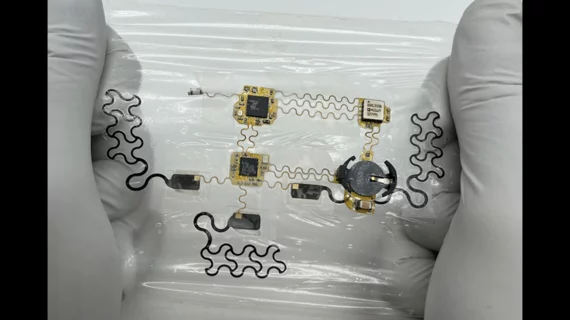A key step forward: Engineers take wearable ‘e-tattoo’ technology for heart disease to the next level
Engineers with the University of Texas at Austin (UT) have developed a flexible, ultrathin “e-tattoo” heart monitor that delivers both electrocardiogram (ECG) and seismocardiogram (SCG) readings to help identify early warning signs of heart disease. The device runs on a small battery that lasts more than 40 hours on a single charge.
The design represents a significant update of an earlier version of e-tattoo technology UT researchers shared back in 2019. This new and improved version is wireless, for instance, and it conforms to a user’s chest in a less intrusive manner than previous prototypes.
The team behind the device published their initial findings with this updated design in Advanced Electronic Materials, noting that the e-tattoo’s “good wearability and low power consumption” suggest 24-hour continuous monitoring is possible.
“Most heart conditions are not very obvious. The damage is being done in the background and we don’t even know it,” lead author Nanshu Lu, PhD, a professor in UT’s department of aerospace and engineering mechanics, said in a prepared statement. “If we can have continuous, mobile monitoring at home, then we can do early diagnosis and treatment, and if that can be done, 80% of heart disease can be prevented.”
One reason Lu et al. see so much potential in their new-look device is that it is able to provide ECG and SCG measurements at once.
“Those two measurements, electrical and mechanical, together can provide a much more comprehensive and complete picture of what’s happening with the heart,” Lu explained. “There are many more heart characteristics that could be extracted out of the two synchronously measured signals in a noninvasive manner.”
While the group has already examined the e-tattoo’s impact on monitoring healthy patients, the next step will involve testing its safety and effectiveness with a wider selection of patients, including those who may be presenting with different cardiac complications.
Read the team’s full analysis here.

